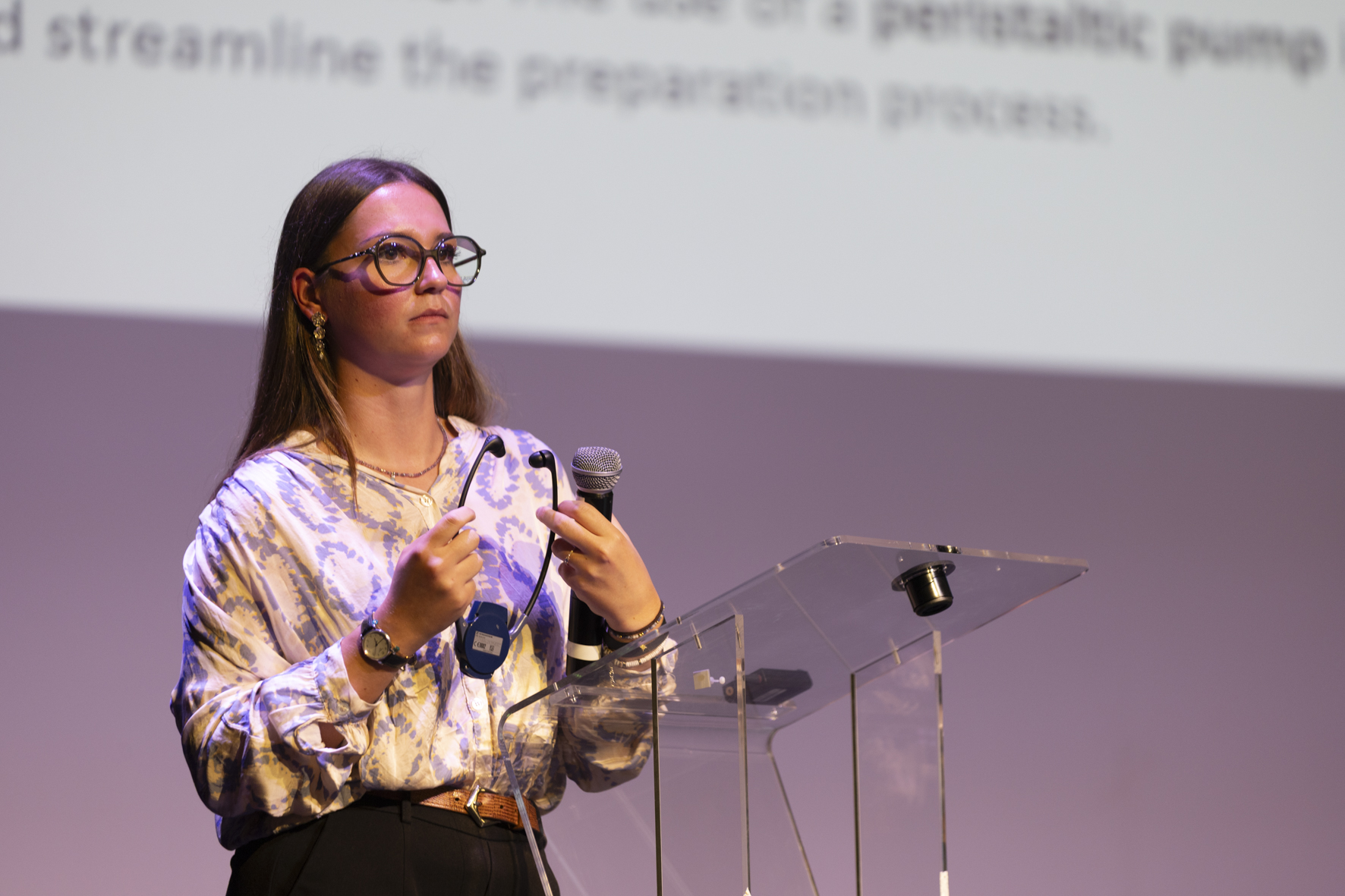Feasibility study of a cardioplegia solution using the Del Nido formulation
2 October 2025
L. Métreau, P. Marchadour, A. Schweitzer-Chaput, R. Ratiney, C. Cotteret, C. GonsService Pharmacie, Hôpital Necker-Enfants Malades, APHP, Université Paris-Cité, Paris, France
Cardioplegia allows the temporary arrest of cardiac activity during surgery, protecting the myocardium and providing essential elements for its survival. The “Del Nido” formulation, composed of lidocaine, mannitol, and ions, was developed for prolonged clamping procedures not achievable with existing solutions.
The objective is to conduct a feasibility study of a Del Nido solution within an injectable drug preparation unit.
Technical feasibility was assessed based on several criteria: availability of raw materials, human resources, production time and cost, and estimation of overfill volume in Plasmalyte® bags.
Analytical feasibility was studied according to ICH Q2 R1 guidelines by developing a stability-indicating method for lidocaine at a concentration of 0.13 mg/mL in a Plasmalyte® solution using reverse-phase high-performance liquid chromatography (RP-HPLC) coupled with a diode-array UV detector. A five-point calibration curve was established over three days, along with three quality control levels. Forced degradation tests were carried out under acidic, alkaline, and oxidative conditions. A stability study was performed under two storage conditions: 25°C ± 2°C (n=3) and 4°C ± 2°C (n=3), including matrix effect analysis. Lidocaine content, pH, and organoleptic properties were monitored.
A manufacturing protocol was created, comprising six steps, including volume adjustment and addition of components. The average production time was estimated at 30 minutes (from picking to release, excluding quality control), with an average handling time of 12 ± 4.19 minutes. The unit cost of materials for the preparation was estimated at €15.
The lidocaine stability-indicating method is linear (R² = 0.9965), precise (repeatability < 1%; intermediate precision CV < 2.2%), and accurate (relative error < 5% across quality control levels). The mobile phase consists of a phosphate buffer at pH 8 (50%) and acetonitrile (50%) with a flow rate of 1 mL/min. The injection volume is 20 µL, and detection is performed at 230 nm. Lidocaine has a retention time of 10.2 minutes. Forced degradation testing revealed significant degradation under oxidative conditions and moderate degradation under basic conditions, without interference from degradation products. No matrix effect was observed. The stability study showed less than 10% variation in lidocaine content at room temperature and at 4°C. No changes in pH or organoleptic properties were observed.
The Del Nido solution is stable for 2 months at room temperature and at 4°C. For batch release, additional testing or video-numeric control of the other components may be necessary. To allow advance preparation, sterility testing will need to be implemented in compliance with the European Pharmacopoeia.
